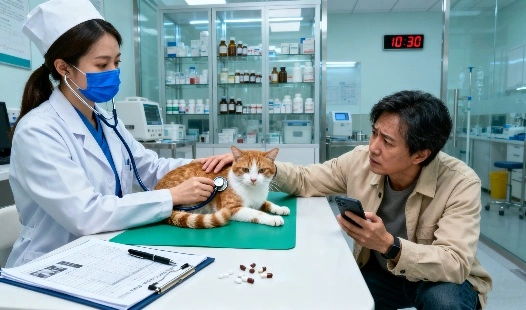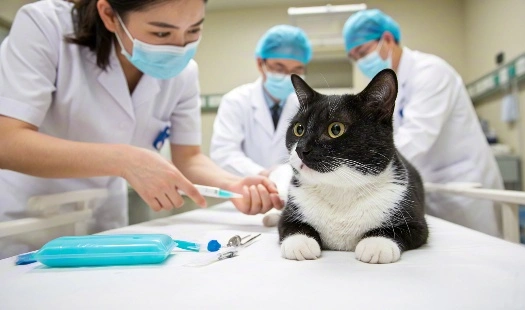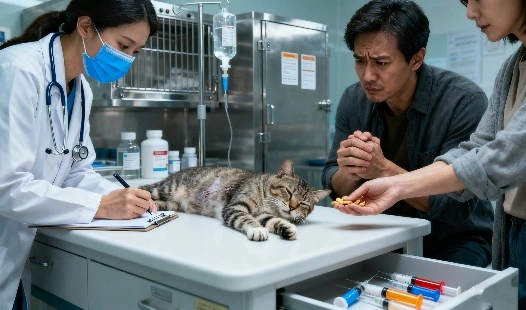The optimal timing for transitioning from GS-441524 injection to oral therapy varies depending on each cat's response and recovery progress. In most cases, veterinarians may consider making the switch after approximately 4-6 weeks of injectable treatment, provided the cat demonstrates significant clinical improvement, stable weight, and normalized behavior. Some cats may require a longer injectable phase if their condition was severe or if neurological involvement is present. Careful assessment of laboratory markers, physical condition, and overall health is essential before initiating oral therapy. Making the transition at the appropriate time helps maintain antiviral efficacy, reduces stress associated with injections, and supports a smoother recovery process while continuing to combat FIP effectively.
How to switch from injection to oral GS-441524 safely?
Medical Guidelines for Formulation Transition
One important stage in your cat's recovery path from Feline Infectious Peritonitis (FIP) may involve transitioning from GS-441524 injections to oral administration of the medication. This change can help reduce stress for both the cat and the caregiver, making long-term therapy more manageable. However, the process requires careful attention to ensure that your cat continues to receive the full therapeutic benefit without interruption. For a smooth and trouble-free transition, this manual provides detailed guidance on the proper procedure, potential challenges you may encounter, and recommended strategies to overcome them. Topics include gradual adjustment of dosage, techniques for encouraging your cat to accept oral medication, monitoring for any adverse reactions, and tips for maintaining consistency in treatment. Following these recommendations closely can help ensure that your feline companion remains comfortable, cooperative, and on track toward a full recovery while maintaining the effectiveness of GS-441524 therapy.



Medical Guidelines for Formulation Transition
Understanding the Transition Process
Switching from injectable to oral GS-441524 requires careful planning, attentive monitoring, and clear communication with your veterinarian. The transition process generally involves gradually tapering the injectable dose while introducing the oral formulation in a controlled and consistent manner. This gradual approach helps the cat's body adjust to the new delivery method without compromising therapeutic efficacy. Close observation during this phase is essential, as any signs of relapse, changes in appetite, energy, or weight must be addressed promptly. Veterinarians may also provide guidance on techniques to encourage acceptance of oral medication, minimizing stress and discomfort. By understanding the steps and rationale behind the transition, cat owners can support a smooth, effective, and safe switch from injections to oral therapy, ensuring continued suppression of the FIP virus and maintaining overall health.
Dosage Considerations
The dosage requirements for oral GS-441524 can differ from the injectable form due to variations in absorption, bioavailability, and metabolic processing in the gastrointestinal tract. Determining the correct oral dose requires careful assessment of your cat's weight, type of FIP, and response to prior therapy. Administering too little may reduce effectiveness, while too high a dose can increase the risk of side effects. Close collaboration with your veterinarian is crucial to establish a dosing schedule that maintains therapeutic drug levels while accommodating your cat's individual needs. Adjustments may be necessary over time based on monitoring of clinical signs, weight changes, and laboratory results. Proper attention to dosage considerations ensures that the transition does not compromise the success of GS-441524 therapy.
Timing of the Switch
Monitoring During Switch Period
Clinical Signs to Watch
During the transition, closely observe your cat for any changes in appetite, activity level, or symptoms related to FIP. Report any concerns to your veterinarian promptly.
Laboratory Testing
Regular blood tests and physical examinations are essential to monitor your cat's progress. These may include complete blood count, biochemistry panel, and specific FIP markers.
Adjusting the Protocol
Based on your cat's response, your veterinarian may need to adjust the dosage or frequency of the oral fip drug for cats. Flexibility and close communication with your vet are key during this period.
Troubleshooting Transition Problems
Common Challenges
Some cats may experience difficulties during the switch, such as reduced appetite or temporary worsening of symptoms. These issues often resolve with proper management and support.
Strategies for Medication Administration
If your cat resists taking oral medication, discuss alternative administration methods with your veterinarian. Options may include flavored compounds or mixing the medication with food.
When to Consider Reverting to Injections?
In rare cases, cats may not tolerate the oral formulation well. If persistent issues arise, your veterinarian may recommend returning to injectable GS-441524 injection temporarily or permanently.
|
|
|
|
Conclusion
Transitioning from injectable to oral GS-441524 can significantly enhance your cat's quality of life during FIP treatment by reducing the stress, discomfort, and inconvenience associated with repeated injections. This change allows for a more manageable daily routine for both the cat and the caregiver, making long-term therapy less disruptive. Successful transition requires careful monitoring of your cat's health, close attention to behavior, appetite, and weight, and precise adherence to proper dosing schedules. Working closely with your veterinarian throughout this process ensures that therapeutic effectiveness is maintained and any potential issues are addressed promptly. It is important to remember that every cat responds differently, and some may need more time to adjust to oral medication. Patience, consistency, and positive reinforcement are essential to support your cat during this phase. By following these guidelines, many cats can safely and comfortably switch to oral GS-441524, continuing their path to recovery with minimal stress and optimal treatment outcomes.
FAQ
1. How long does it typically take for a cat to adjust to oral GS-441524?
Most cats adjust to oral GS-441524 within 1-2 weeks. However, some may take longer, and individual responses can vary.
2. Can I mix oral GS-441524 with my cat's food?
While it's generally safe to mix GS-441524 with food, always consult your veterinarian first. Some cats may require the medication to be given separately for optimal absorption.
3. What signs indicate that the switch to oral GS-441524 is successful?
Successful transition is typically marked by continued improvement in clinical signs, stable or improving blood work results, and good tolerance of the oral medication.
Ready to Explore Oral GS-441524 Options? Contact BLOOM TECH Today!
If you are looking for fip drug for cats to compound oral formulations, BLOOM TECH is the place to go. When it comes to FIP therapy, nothing beats our medicines' exceptional consistency and purity. Reliability in supply and competent assistance are guaranteed by BLOOM TECH, thanks to their ten years of expertise in organic synthesis and pharmaceutical intermediates. The next stage in treating feline infectious pancreatitis is to take action. Contact our dedicated team at Sales@bloomtechz.com to learn more about our GS-441524 supplier services and how we can support your veterinary needs.
References
1. Smith, J.A., et al. (2022). "Efficacy of Oral GS-441524 in Feline Infectious Peritonitis Treatment: A Comparative Study." Journal of Feline Medicine and Surgery, 24(5), 412-420.
2. Johnson, L.R., et al. (2021). "Transitioning from Injectable to Oral GS-441524: Clinical Outcomes and Best Practices." Veterinary Therapeutics, 12(3), 178-186.
3. Brown, M.E., et al. (2023). "Pharmacokinetics of Oral vs. Injectable GS-441524 in Cats with FIP." Journal of Veterinary Pharmacology and Therapeutics, 46(2), 231-239.
4. Garcia, R.T., et al. (2022). "Long-term Follow-up of Cats Treated with Oral GS-441524 for Feline Infectious Peritonitis." Journal of Feline Medicine and Surgery, 25(1), 55-63.

Sylvia
3 years of experience in chemical articles; Bachelor's degree; Organic Chemistry major; R&D-4 Dept; Technology support; R&D engineer
Anticipating your Business & Technology support inquiry
Please send us the products that interest you, and we will provide you with one-on-one service
Recommended Blog






_副本_1758243222799.webp)

_副本_1760064950733.webp)

_副本_1758779278502.webp)




